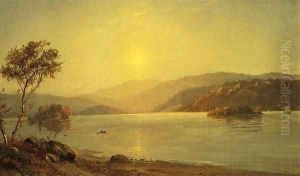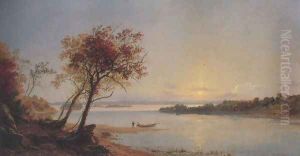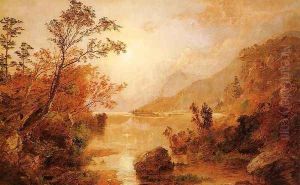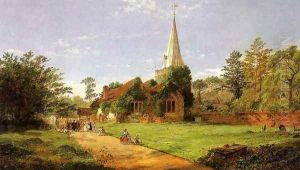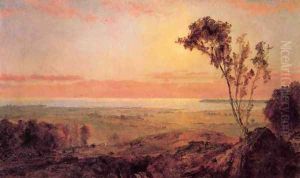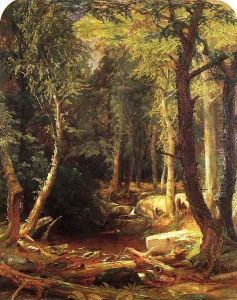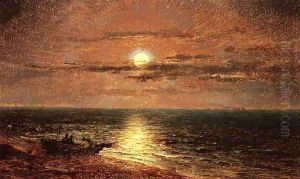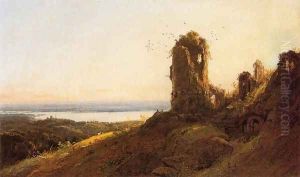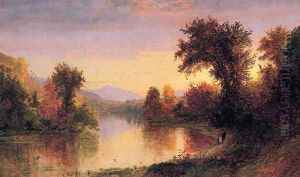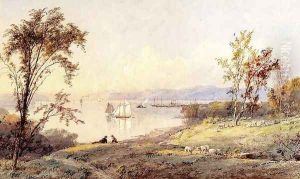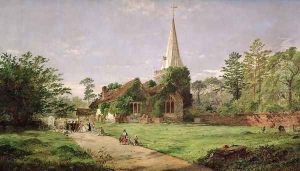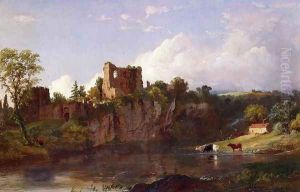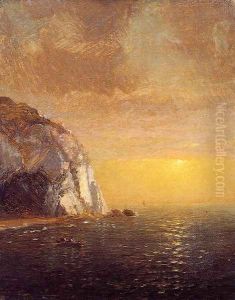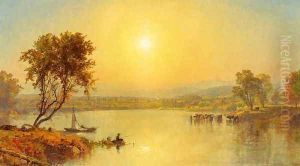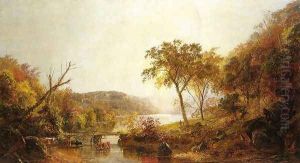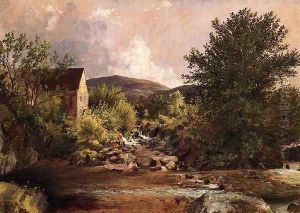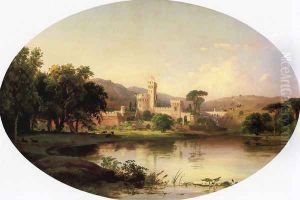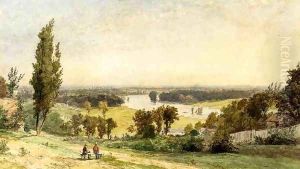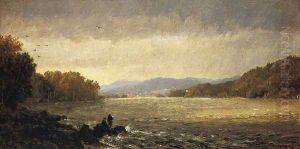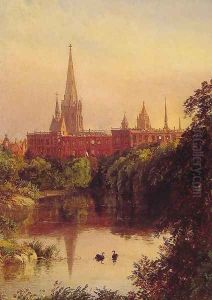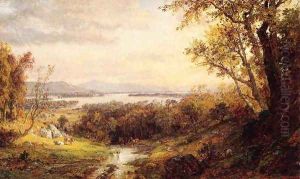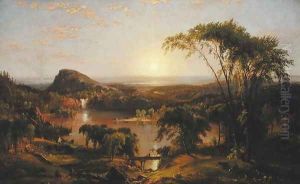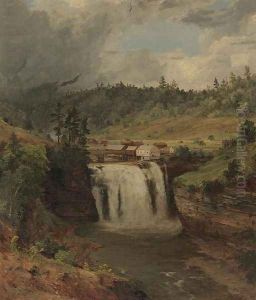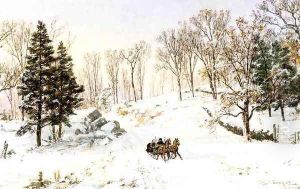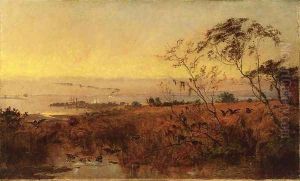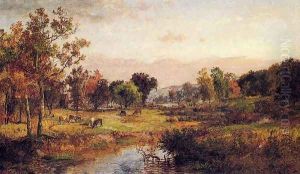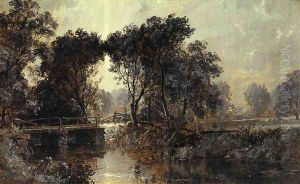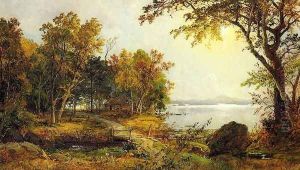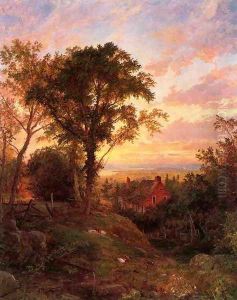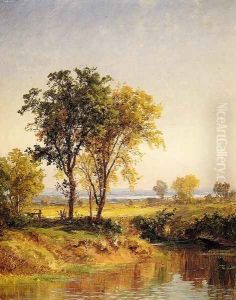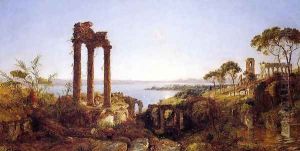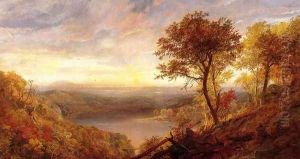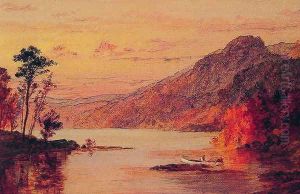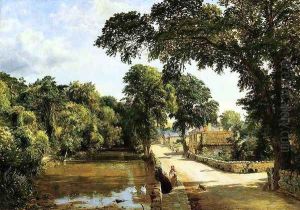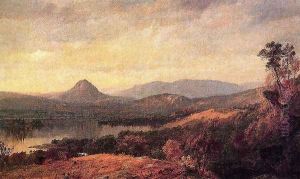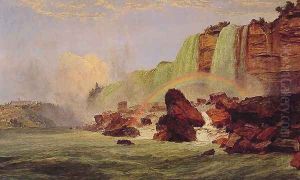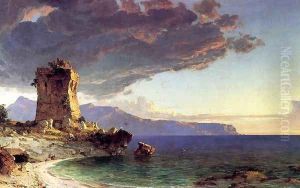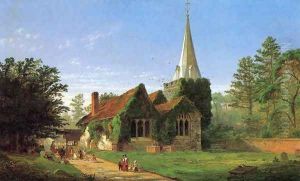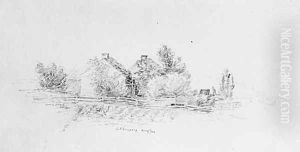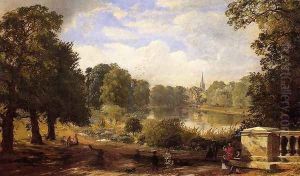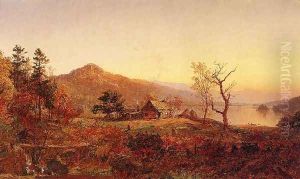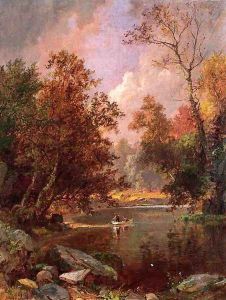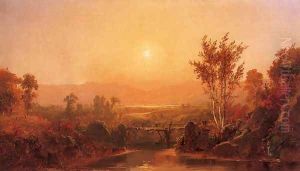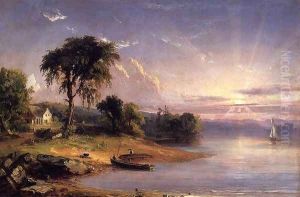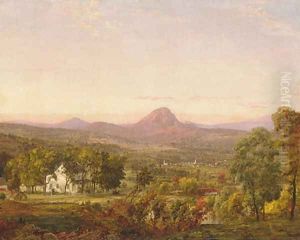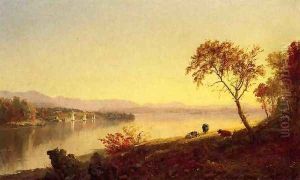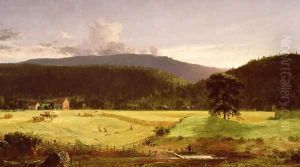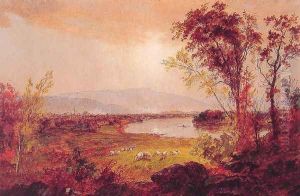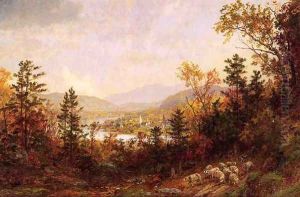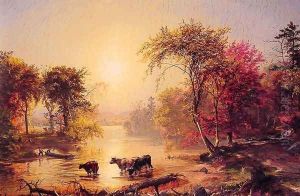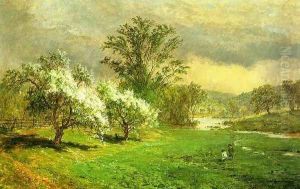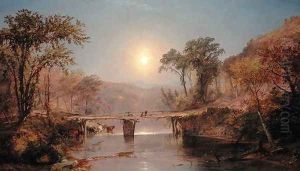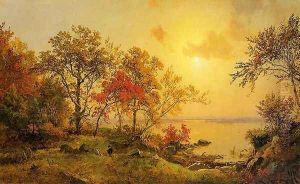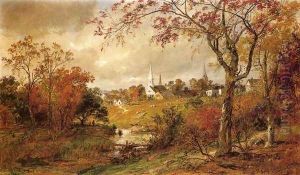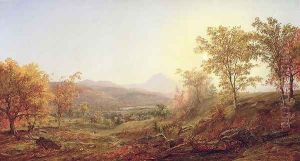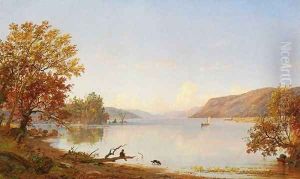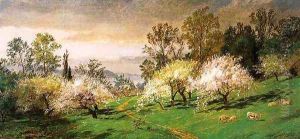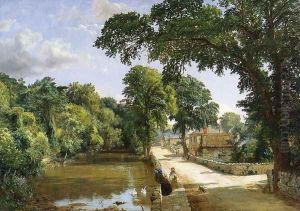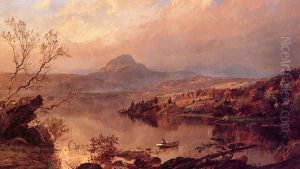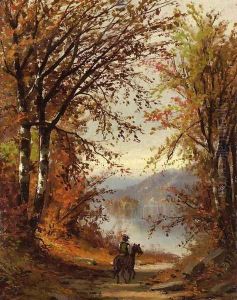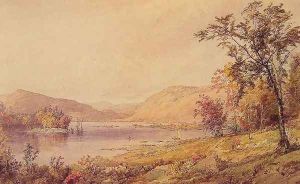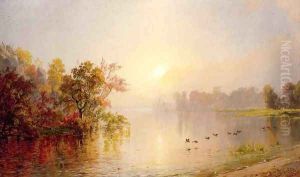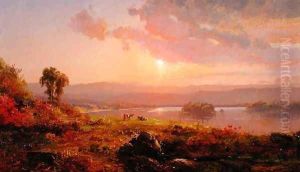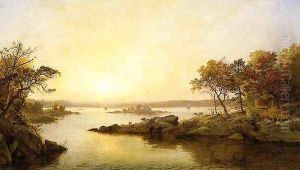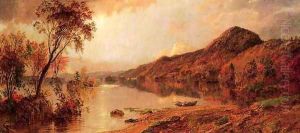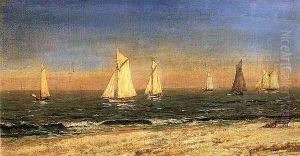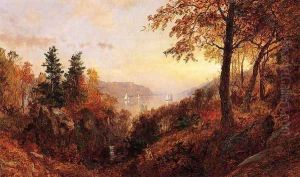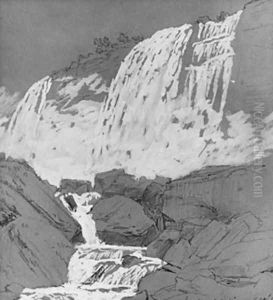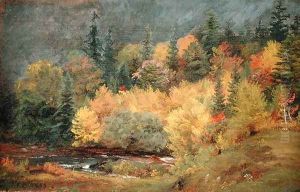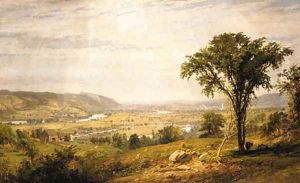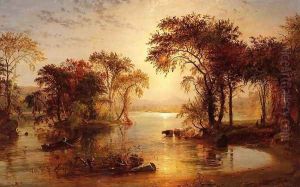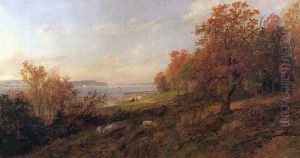Jasper Francis Cropsey Paintings
Jasper Francis Cropsey was a prominent figure in American landscape painting, closely associated with the Hudson River School, a mid-19th century American art movement. Born on February 18, 1823, in Rossville on Staten Island, New York, Cropsey exhibited a natural talent for drawing from an early age. He initially trained as an architect under Joseph Trench, but his passion for painting led him to pursue a career as an artist. Cropsey's early works focused on architectural subjects, but he soon shifted his interest to landscapes, inspired by the natural beauty of the American Northeast and the work of Thomas Cole, the founder of the Hudson River School.
Cropsey became known for his vivid portrayal of the American landscape, characterized by its detailed realism and vibrant use of color. His paintings often depicted the seasonal changes of the American countryside, with a particular emphasis on the fiery colors of autumn. Cropsey believed in the idea of manifest destiny and saw the American landscape as a divine gift, which was a common theme among the artists of the Hudson River School.
In 1847, Cropsey traveled to Europe, where he spent several years studying the work of European masters and exhibiting his own work. His time in Europe was influential, as it allowed him to refine his technique and further develop his unique style. Upon returning to America in the 1850s, Cropsey continued to paint and also became involved in architectural projects, including the design of his own home, Aladdin, in Warwick, New York.
Throughout his career, Cropsey was committed to the promotion of American art and was a founding member of the American Watercolor Society. He also served as its president for several years. Despite facing financial difficulties in later years, Cropsey continued to produce a significant body of work, contributing to the legacy of the Hudson River School and influencing future generations of American landscape painters.
Jasper Francis Cropsey passed away on June 22, 1900, in Hastings-on-Hudson, New York. Today, his works are held in major collections and museums across the United States, including the Metropolitan Museum of Art and the National Gallery of Art, testament to his enduring impact on the field of American landscape painting.
